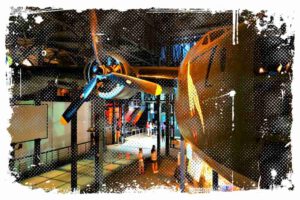You may have heard of Tarnowskie Góry, a small town in Poland known for its historic lead, silver and zinc ore mine. Well, I have some exciting news to share with you. In 2017, this mine and its groundwater management system were inscribed on the UNESCO World Heritage List.

Being a part of this list is not only an honor, but it also means that the site will be protected and that its outstanding universal value will be recognized for future generations to learn about.
The entire site was divided into eight distinct areas, each with their own specific attributes. If you ever have the opportunity to visit Tarnowskie Góry, be sure to take a tour of this historic site. The UNESCO protected area includes the main mine complex, the water management system of the Friedrichsgrube Mine and the Staszic Water Supply Station, as well as the surrounding outbuildings and mine shafts.
When visiting the site, you’ll learn that it covers a vast area of 1,672.76 hectares, including both underground and surface parts. The underground part covers an area of 1,330.70 hectares. Here you’ll find a fascinating mining industrial environment with its own unique architecture and technical solutions. You’ll have the opportunity to explore underground workings including the Peace Shaft, God Help Adit, Angel Shaft and Adder Shaft (pl: Szyb Pokój, Sztolnia Boże Wspomóż, Szyb Anioł i Szyb Żmija.).
↳ PRO TIP: Do you like traveling? Then before you buy any ticket or book an attraction, check if it's available in this worldwide Viator Database. You may save a lot of money and time. No need to thank me :)
You’ll also see the portal and extension of the Frederick Deep Adit. It features a beautiful neoclassical portal and a special channel for draining the mine. Other notable elements of the UNESCO protected site include the Tarnowskie Góry City Park and the Staszic Water Supply Station. The latter was built in the 1880s and was seamlessly integrated into the mine system.
Don’t forget that the site also includes a buffer zone of 2,774.35 hectares and additional protection zones of 834.17 hectares, providing even more opportunities for exploration and discovery.
Most Interesting Attractions In The Complex
After years of hard work and dedication, efforts to inscribe these monuments on the World Heritage List finally paid off at the 41st session of the World Heritage Committee.
You can explore twenty-eight historic sites divided into three groups, each offering a unique and compelling insight into the area’s history. Some of the most interesting sites include:
Historic Silver Mine – Museum
The museum is divided into two parts, the first being a multimedia exhibition located in the former mine buildings on the surface. Here you’ll learn all about the history of mining and the working conditions of yesteryear through interactive displays.
Next, you’ll be taken underground as part of an organized group, where the second part of your tour begins. You’ll walk through specially prepared corridors and learn about mining legends and the unique aspects of working underground. You’ll also have the opportunity to explore the deepest galleries of the mine.
One of the highlights of your visit will be the part of the route you’ll travel on specially prepared boats for a truly immersive experience.
- Pictures and Google Maps Location: Here
Black Trout Adit
This incredible feat of engineering served an important drainage function and was the result of the efforts of Friedrich Wilhelm von Reden. Local miners had approached von Reden with their concerns about water flooding the underground passages, and he took it upon himself to find a solution.
Prior to the implementation of von Reden’s solution, which included the use of a steam engine, the miners used antiquated tools and horses to remove the water. With the steam engine and the construction of a special adit, the working conditions for the Silesian miners improved significantly.

The Black Trout Gallery is the longest part of the underground drainage system, stretching for several kilometers and discharging water into the Drama River. Today, you have the opportunity to see this engineering marvel firsthand, as you travel by boat through a 600-meter-long section of the adit.
- Pictures and Google Maps Location: Here
City Park in Tarnowskie Góry
If you don’t get a chance to visit the mine or adit, or if you have some extra time on your hands, be sure to take a stroll through the historic city park. This park is also a UNESCO-listed site, recognized for its historical and cultural significance.

Founded in 1903 by a Catholic priest named Franciszek Kokot, the park was created as a result of Kokot’s vision for the proper developement of the area after the former mines were excavated.
- Pictures and Google Maps Location: Here
A Brief History of Mines in Tarnowskie Góry
According to local legend, the first silver nugget in the area was discovered by a farmer named Jan Rybka (or Rypka) while working in the fields. This legend contains a kernel of truth, as the name Jan Rybka does appear in the census of landowners in the region. This discovery led to the rapid development of the nearby villages, attracting people eager for wealth and well-paying jobs.

The case aroused the interest of Duke John II the Good, who, after negotiations with the local nobility, granted the settlement city rights in 1526. This marked the beginning of a new era of growth and prosperity for the region, as the silver mines brought wealth and employment opportunities to the area.
Two years later, the town received from the ruler a set of rules for the miners to work by. But only a few years later, in 1534, the miners revolted against the disregard of the granted laws. They destroyed some of the mining equipment and destroyed the town hall and the houses of the officials. The uprising lasted only three days before it was put down by army troops. The leaders were expelled and flogged, and the mine managers were ordered to strictly obey the regulations.
In addition to silver, lead and gallium began to be mined in the Tarnow mines. However, due to wars, epidemics, and natural disasters, mining in the area began to decline. This changed at the end of the 18th century with the arrival of Prussian councilor Friedrich Wilhelm von Reden. He quickly came up with a plan to save the mining industry and even brought a steam engine to Tarnowskie Góry. Despite the increasing Germanization of Silesia, the local miners managed to preserve their Polish culture.
During the Silesian plebiscite, the town voted to be part of Germany, while the district preferred to be part of Poland. As a result, Tarnowskie Góry became part of Poland.
Years before, there were plans to create the first museum in the former mine, but these plans were interrupted by the outbreak of the Second World War. The idea was revived in the 1950’s and finally started in the next decade. However, the construction of the museum was not without its challenges. Francis Garus, who was in charge of the construction of the museum, died. He was killed by the mud that was created. But all the efforts paid off in 1976, when the mine was finally opened to you, the tourists.
Sightseeing
The museum facilities in Tarnowskie Góry can be visited only in groups with a guide (individual tourists are joined in groups).
Days and Opening Hours
The Black Trout Salt Mine is open daily from 10 a.m. to 5 p.m. during the summer season, while the Historic Silver Mine is open daily from 9 a.m. to 3 p.m. outside of the summer season.
Please note that during the month of July, the Historic Silver Mine is open weekdays from 9:00 am to 3:00 pm and weekends from 9:00 am to 5:00 pm. And in August, it’s open from 10 a.m. to 4 p.m. on weekdays and 9 a.m. to 5 p.m. on weekends. Don’t miss the opportunity to explore the rich history of Tarnowskie Góry and its mining heritage.
Entry ticket prices
When visiting Tarnowskie Góry, you should be aware that the price of admission to the Monumental Silver Mine and the Black Trout Tunnel depends on the size of your group. For the Monumental Silver Mine, a regular ticket costs between 35 and 43 zlotys, while a discounted ticket costs between 28 and 37 zlotys. For the Black Trout Tunnel, a regular ticket costs about 24 zlotys, and a concession ticket costs between 55 and 20 zlotys.
If you’re interested in visiting both attractions, you can buy a combined ticket for 55 zlotys (regular) or 42 zlotys (discounted). Be sure to check the prices before your visit so you can plan accordingly.
Bibliography:
- https://en.wikipedia.org/wiki/Black_Trout_Adit
- https://kopalniasrebra.pl/regulamin-zwiedzania/



